Sporting dark face paint and clutching a gun, teenage soldier-in-training Takuma Hiyane crawls across a field on Japan’s Okinawa, the front line of the nation’s defense as anxiety grows over China’s territorial ambitions.
As the world marks the 80th anniversary of World War II, Japan — which has been officially pacifist since its defeat — is trying to lure more talent into its armed forces.
Tokyo began upping its military spending in 2023 and aims to make it 2 percent of GDP by the end of 2027, but has come under pressure from Washington to boost it even further. Japan fears that China could attempt a forceful takeover of Taiwan, potentially triggering a conflict with Washington that could drag in Tokyo as well.
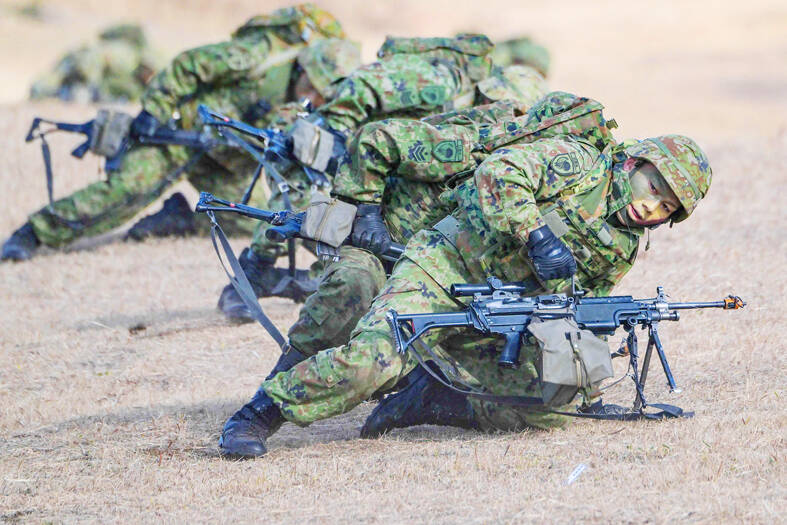
Photo: AFP
However, it has been hard to convince enough young Japanese to enlist.
Hiyane, a 19-year-old former high school badminton player who signed up after his graduation in March, was swayed by the idea of helping victims of natural disasters, he said.
“I thought this was a job that I could contribute to my country and be proud of, so I decided to join,” he said, carefully dodging questions on the sensitive topic of national defense.
Tokyo wants a beefed-up military in southwestern regions such as Okinawa, home to about 70 percent of US military facilities in Japan and seen as strategically important for monitoring China, the Taiwan Strait and the Korean Peninsula.
In 2023, the Japan Self-Defense Forces (JSDF) aimed to hire almost 20,000 people, but recruited just half that number, according to the defense ministry.
Dangerous duties, low pay and a young retirement age of about 56 are off-putting for young Japanese, officials and experts say.
Japan’s low birth rate, shrinking population and tight labor market are also complicating recruitment, leaving about 10 percent of the force’s 250,000 positions unfilled.
On Okinawa, Hiyane and his fellow trainees braved scorching heat to stage a line formation, before dashing forward to capture a mock enemy fort.
“I find training here very physical and hard, but I am used to it in a way since I played sports at school,” he said. “I find it more exhausting and nerve-racking when I have to shoot guns.”
Japanese Prime Minister Shigeru Ishiba in June said that increasing JSDF numbers was “a top priority” given Japan’s worsening security environment.
Kazuyuki Shioiri, who helps manage an infantry regiment in Okinawa, said increased defense expenditure was gradually making troops’ lives better through various upgrades, including air conditioning, cleaner bathrooms and more privacy in dormitories.
“We have been able to improve conditions,” he said.
Before the extra funds, Japanese troops had complained that they lacked bullets and basic supplies.
They used to strip old tanks and jets for parts to repair newer equipment, the defense ministry said.
However, it is not simply “muscular troops with high combat capabilities” that the force wants, said Toshiyuki Asou, a JSDF recruiter on Okinawa.
“We are looking for a wide range of personnel now as national security involves everything from cybersecurity, space defense, electromagnetic warfare and of course intelligence work,” he added.
Despite the government’s defense push, Japanese citizens have traditionally kept their distance from the subject, with some still carrying bitter memories of the nation’s militarist past. Japan’s constitution, which was drafted by the US after World War II and enjoys wide public support, bans Tokyo from using force and does not recognize the JSDF as a formal military.
While the troops are highly respected, the public has loudly opposed any attempt to amend the constitution to grant them that status.
In a Gallup International survey released last year, only 9 percent of Japanese respondents said they would fight for the country if there was a war, while 50 percent said they would not.
That compares with greater willingness in some other countries, with 46 percent of South Koreans, 41 percent of Americans and 34 percent of Canadians saying they would fight.
Ryoichi Oriki, the former head of the Joint Staff of the JSDF, said during a recent press briefing that he wished for “greater understanding among the public about the reality of national defense.”
In the field, new recruits said they were excited about launching their military careers despite geopolitical turbulence.
“I have learned the spirit and skills of Self-Defense Force personnel,” said Hiyane, who is about to complete his initial training. “I feel I have grown.”
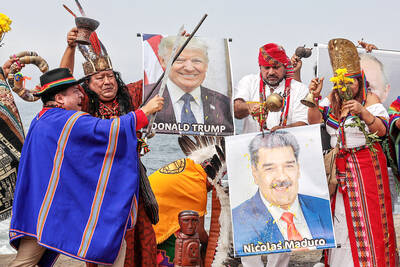
Shamans in Peru on Monday gathered for an annual New Year’s ritual where they made predictions for the year to come, including illness for US President Donald Trump and the downfall of Venezuelan President Nicolas Maduro. “The United States should prepare itself because Donald Trump will fall seriously ill,” Juan de Dios Garcia proclaimed as he gathered with other shamans on a beach in southern Lima, dressed in traditional Andean ponchos and headdresses, and sprinkling flowers on the sand. The shamans carried large posters of world leaders, over which they crossed swords and burned incense, some of which they stomped on. In this
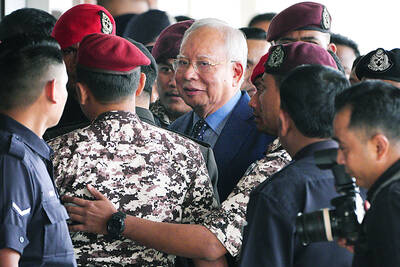
‘NO COUNTRY BUMPKIN’: The judge rejected arguments that former prime minister Najib Razak was an unwitting victim, saying Najib took steps to protect his position Imprisoned former Malaysian prime minister Najib Razak was yesterday convicted, following a corruption trial tied to multibillion-dollar looting of the 1Malaysia Development Berhad (1MDB) state investment fund. The nation’s high court found Najib, 72, guilty on four counts of abuse of power and 21 charges of money laundering related to more than US$700 million channeled into his personal bank accounts from the 1MDB fund. Najib denied any wrongdoing, and maintained the funds were a political donation from Saudi Arabia and that he had been misled by rogue financiers led by businessman Low Taek Jho. Low, thought to be the scandal’s mastermind, remains
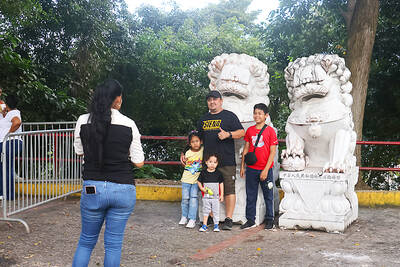
Near the entrance to the Panama Canal, a monument to China’s contributions to the interoceanic waterway was torn down on Saturday night by order of local authorities. The move comes as US President Donald Trump has made threats in the past few months to retake control of the canal, claiming Beijing has too much influence in its operations. In a surprising move that has been criticized by leaders in Panama and China, the mayor’s office of the locality of Arraijan ordered the demolition of the monument built in 2004 to symbolize friendship between the countries. The mayor’s office said in
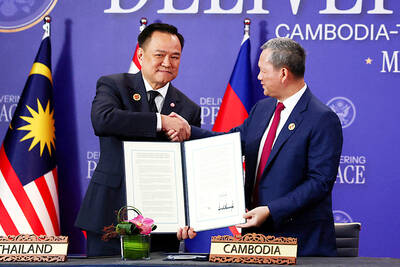
FIGHTING CONTINUES: Thai military dropped 40 bombs on border areas, Cambodia said, while Bangkok said Phnom Penh launched heavy attacks and damaged homes Cambodia yesterday accused Thailand of intensifying its bombardment of disputed border areas, even as officials from the two countries attend a multi-day meeting aimed at negotiating an end to deadly clashes. The neighbors’ long-standing border conflict reignited this month, shattering an earlier truce and killing more than 40 people, according to official counts. About 1 million people have also been displaced. Cambodian and Thai officials were in their third day of talks at a border checkpoint, with ministers of defense from the two countries scheduled to meet today. However, the Cambodian Ministry of National Defense said Thailand’s military carried out a heavy